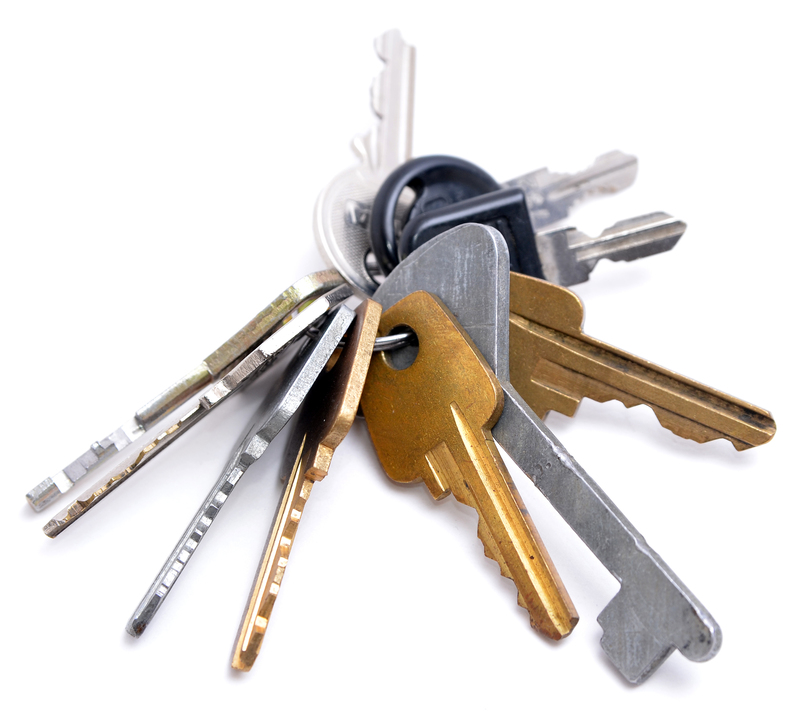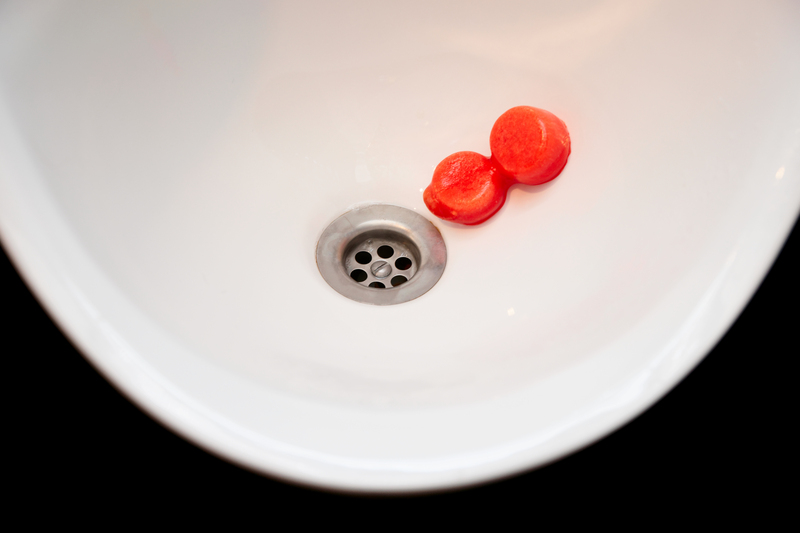Goodbye Grease: Effective Ways to Clean Your Enamel Oven Trays
Posted on 22/05/2025
Goodbye Grease: Effective Ways to Clean Your Enamel Oven Trays
Enamel oven trays are known for their durability, glossy finish, and resistance to high temperatures, making them a staple in most modern kitchens. However, after baking delicious meals, these trays are often left with a stubborn layer of grease and burnt-on food. Regular cleaning is essential, not only to maintain the aesthetics of your cookware but also to preserve its longevity and your health. In this article, we'll break down the most effective ways to clean enamel oven trays and bid farewell to persistent grease for good.
Why Is Cleaning Enamel Oven Trays Important?
Cleaning your enamel oven trays isn't just about appearance. Over time, leftover grease and grime can:
- Cause unpleasant odors during cooking
- Influence the taste of your food
- Harbor harmful bacteria and germs
- Lead to staining and reduced lifespan of the tray
- Impact the overall hygiene of your kitchen
Unlike some other cookware, enamel trays are prone to gradual buildup if left unwashed after use. Understanding how to care for these trays can save you time, future scrubbing, and potential replacement costs.

Understanding Enamel Oven Trays
Enamel coated trays generally consist of a metal base coated in a smooth, glass-like layer. This layer is resistant to rusting, doesn't react with acidic foods, and is easier to clean than untreated metal. However, enamel can chip if handled roughly or cleaned with abrasive tools. Therefore, knowing the right cleaning methods is crucial for preserving that smooth, non-stick surface.
Common Causes of Oven Tray Grease Buildup
- Baking high-fat foods such as roasts and pastries
- Spillages from bubbling sauces
- Cooking directly on the tray without parchment paper
- Infrequent cleaning, leading to layers of burnt residue
Now that we've covered the basics, let's dive into the most effective techniques for cleaning enamel oven trays.
The Best Ways to Clean Enamel Oven Trays
1. Immediate Post-Use Cleaning
Perhaps the most efficient way to clean your enamel oven tray is to address messes promptly. After removing your dish from the oven, allow your tray to cool slightly so it's safe to handle, but not long enough for the residue to harden completely. Rinse the tray with warm water to loosen food particles. Then, wash with a soft sponge and mild dish soap. This quick cleaning habit prevents grease from baking onto the tray over multiple uses.
2. Soaking Method for Stubborn Grease
If you've let your tray sit, don't worry. A good old-fashioned soak can work wonders:
- Fill your sink or a large tub with hot water.
- Add a generous squirt of dishwashing soap and a tablespoon of baking soda.
- Submerge the tray and let it soak for 30 minutes to an hour.
- Use a non-scratch sponge to scrub away softened grease and residues.
- Rinse and dry thoroughly.
For extra-tough grease, let the tray soak overnight to loosen really stubborn stains.
3. Baking Soda and Vinegar Paste
An all-natural way to remove stubborn grease from enamel oven trays is to use a paste made from baking soda and white vinegar:
- Sprinkle a generous layer of baking soda over the stained areas.
- Spray or drizzle white vinegar on top. The mixture will fizz.
- Let it sit for 15-20 minutes to break down grease and grime.
- Gently scrub with a soft-bristle brush or sponge.
- Rinse with hot water and dry.
Baking soda is a mild abrasive and vinegar is a natural degreaser, so together they're highly effective without causing damage to the enamel coating.
4. Dishwashing Tablets for Deep Cleaning
Did you know dishwasher tablets can be powerful grease fighters outside the dishwasher? For really stubborn or burnt-on stains:
- Place your tray in the sink or a large tub.
- Add hot water until the tray is submerged.
- Drop in a dishwasher tablet and let it dissolve.
- Soak for 1-2 hours or overnight for severe stains.
- Wipe clean using a soft cloth or sponge.
This method works especially well when you haven't cleaned the tray in a while and the grease just won't budge.
5. Heavy-Duty Commercial Oven Cleaners (Use with Caution)
For extreme cases, commercial oven cleaners can be used, but it's vital to follow the manufacturer's instructions and make sure the product is safe for enamel surfaces. Always wear gloves and ventilate your kitchen well when using strong chemicals. Never mix chemical cleaners with other home remedies like vinegar or baking soda, as unwanted reactions could occur.
Eco-Friendly Cleaning Alternatives
If you prefer eco-friendly and non-toxic options for cleaning your enamel trays, try these:
- Lemon juice - The citric acid cuts through grease and leaves a fresh scent.
- Salt - Coarse salt acts as a gentle abrasive when sprinkled on top of stubborn stains before scrubbing.
- Eco-friendly dish soap - Plant-based soaps clean without harsh chemicals.
By using natural products, you can maintain both kitchen hygiene and a healthier home environment.
Preventing Future Grease Buildup on Enamel Oven Trays
1. Use Baking Paper or Silicon Mats
Baking paper or silicon mats create a protective barrier that prevents food and grease from directly contacting your tray. This dramatically reduces cleanup time and keeps trays looking new for longer.
2. Clean After Every Use
Washing trays immediately after use--before grease and food have time to set--is the easiest way to avoid tough stains and burnt-on residue.
3. Avoid High-Temperature Self-Cleaning Cycles
While some ovens have a self-cleaning function, these intense cycles can occasionally degrade the enamel coating over time. Hand washing is gentler and preserves the finish.
4. Don't Use Steel Wool or Metal Scrapers
These tools can damage the protective enamel layer, causing chips where food and moisture can settle, inviting further stains and shortening your tray's lifespan.
Frequently Asked Questions About Cleaning Enamel Oven Trays
How Do You Remove Burnt-On Grease from Enamel Oven Trays?
For burnt-on grease or food, try soaking the tray with hot water, baking soda, and dish soap for at least an hour, then gently scrubbing. If that fails, a paste of baking soda and vinegar or a dishwasher tablet soak overnight should handle stubborn stains.
Can You Use Bleach on Enamel Oven Trays?
Using bleach is generally discouraged because it can cause discoloration or degrade the enamel finish. Stick to recommended methods like dish soap, baking soda, vinegar, or approved commercial cleaners.
Is It Safe to Clean Enamel Trays in the Dishwasher?
Some enamel oven trays are labeled dishwasher-safe. However, repeated high-temperature cycles and harsh detergents can eventually dull the finish. Handwashing is always the safest option to maintain the tray's glossy appearance.
What If My Enamel Tray Gets Chipped?
If your tray develops chips or cracks, discontinue using it for food, as these areas may harbor bacteria and eventually cause the tray to deteriorate. Consider replacing trays that have significant enamel loss.
Top Tips for Maintaining Pristine Enamel Oven Trays
- Always let the tray cool slightly before cleaning to avoid thermal shock, which can damage the enamel.
- Wipe off excess food debris before washing to reduce scrubbing time.
- Air dry thoroughly before storage to prevent water spots and mold growth.
- Store trays with care, avoiding stacking with heavy pots or pans that could cause scratches or chips.

Recap: The Best Practices for Grease-Free Enamel Oven Trays
- Act fast: Clean soon after use for the easiest results
- Soak before scrubbing: Hot, soapy water softens stuck-on grease
- Use natural solutions: Baking soda, vinegar, and lemon are gentle yet effective
- Avoid abrasives: Stick to soft sponges and brushes
- Protect with parchment or mats: Minimize direct food-to-tray contact
Conclusion
Enamel oven trays are a worthy investment for any kitchen, but they require the right cleaning approach to stay in top condition. By adopting these effective cleaning methods, you'll keep your trays grease-free, gleaming, and ready for your next culinary creation. Whether you prefer eco-friendly home remedies or need an occasional deep clean with stronger products, following these guidelines will ensure you say goodbye to stubborn grease--and hello to sparkling enamel trays--every time you bake.
Now that you know the secrets, make these habits part of your kitchen routine and enjoy ovens and trays that stay pristine, meal after meal.



